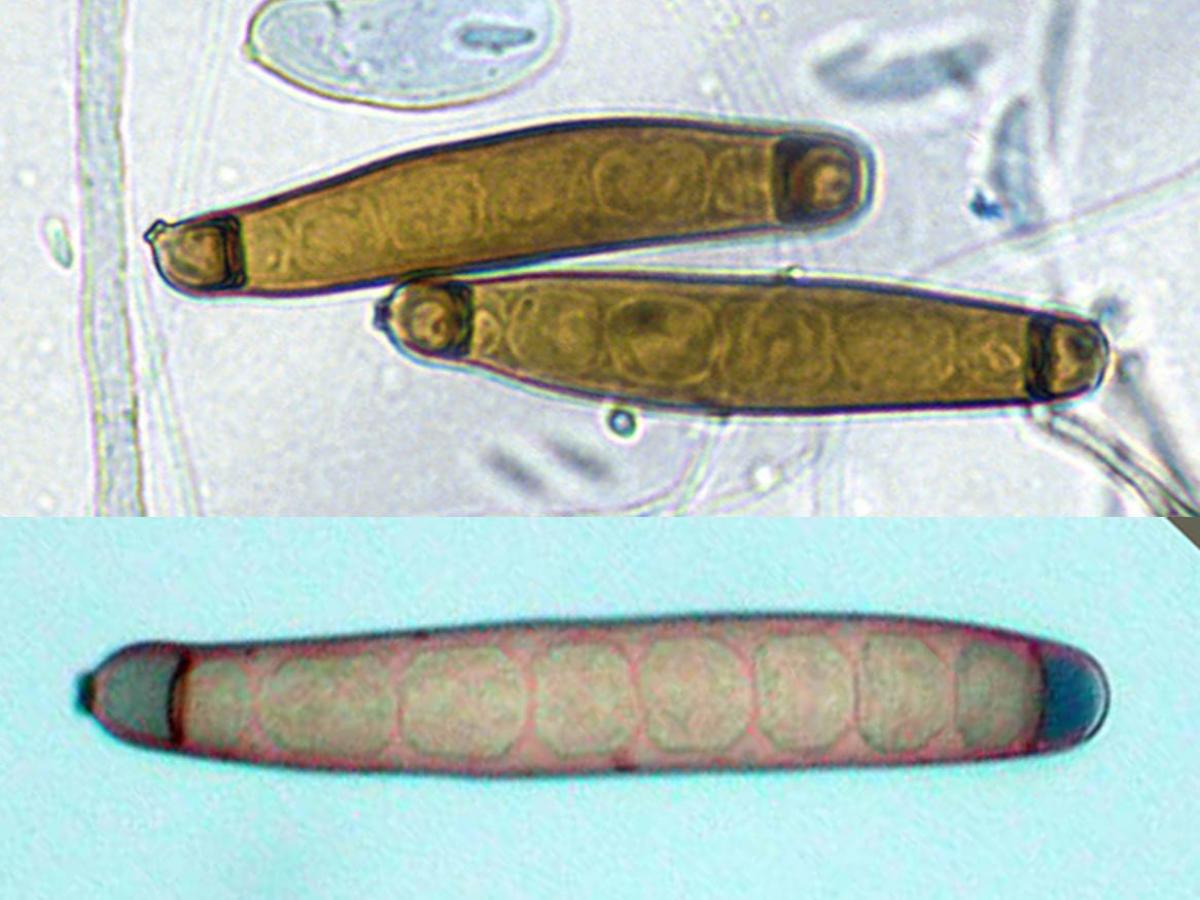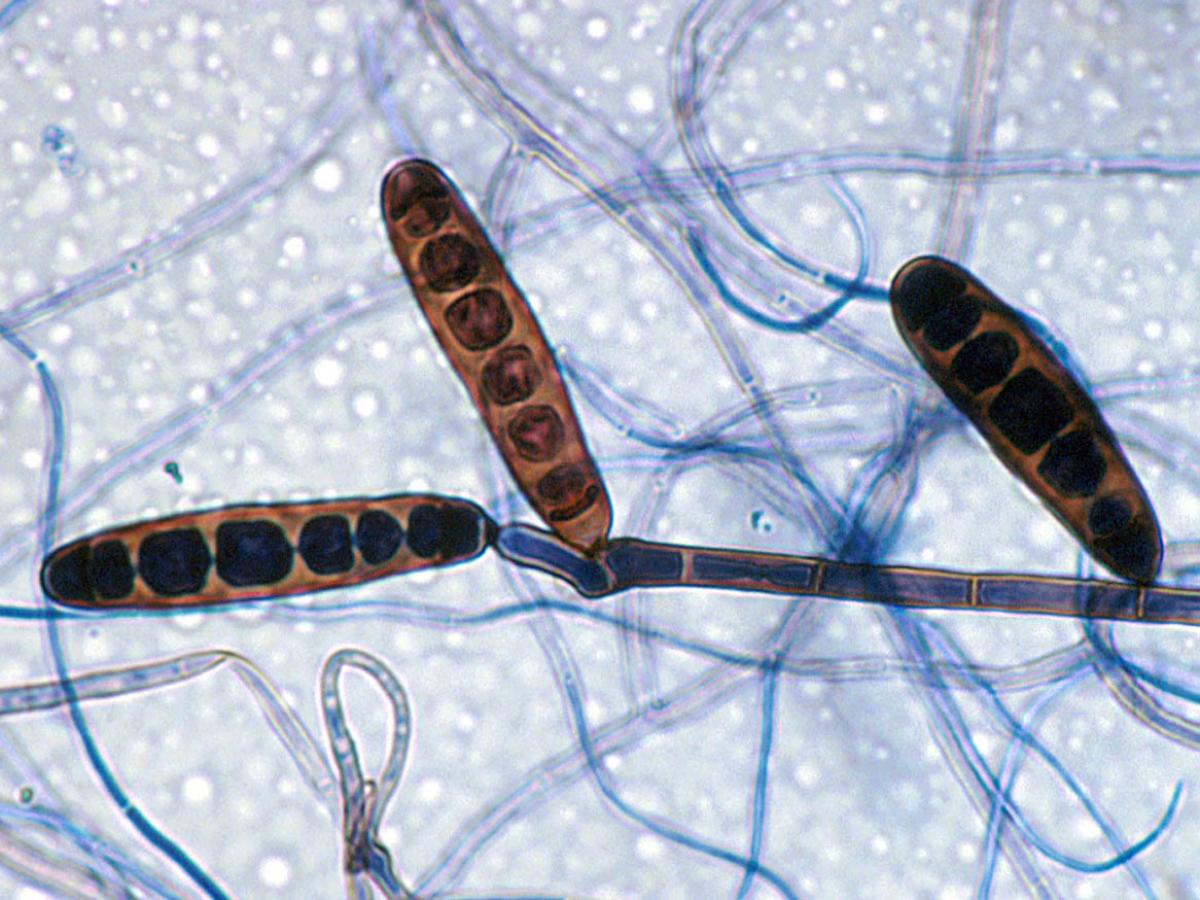Status message
Correct! Excellent, you have really done well. Please find additional information below.
Unknown 60 = Exserohilum rostratum
Clinical presentation: PAS stained section from a mucous plug showing septate fungal hyphae.

Culture: Cultures of Exserohilum rostratum are grey to blackish-brown, suede-like to floccose in texture, and have an olivaceous black reverse.

Microscopy: Conidia are straight, curved or slightly bent, ellipsoidal to fusiform and are formed apically through a pore (poroconidia) on a sympodially elongating geniculate conidiophore. Conidia have a strongly protruding, truncate hilum and the septum above the hilum is usually thickened and dark. The end cells are often paler than the other cells and the walls are often finely roughened. Conidial germination is bipolar.
The genus Exserohilum may be differentiated from the closely related genera Bipolaris and Drechslera by forming conidia with a strongly protruding truncate hilum (i.e. exserted hilum). The hilum is defined as "a scar on a conidium at the point of attachment to the conidiophore". In Drechslera species, the hilum does not protrude whereas in Bipolaris species the hilum protrudes only slightly.


Comment: Exserohilum species are common environmental moulds found in soil and on plants, especially grasses. Several species have been reported as agents of phaeohyphomycosis, notably E. rostratum (= E. halodes), E. meginnisii and E. longirostratum. Clinical manifestations include mycotic keratitis, subcutaneous phaeohyphomycosis, endocarditis, osteomyelitis and sinusitis in both normal and immunosuppressed patients.
About Exserohilum Back to virtual assessment




